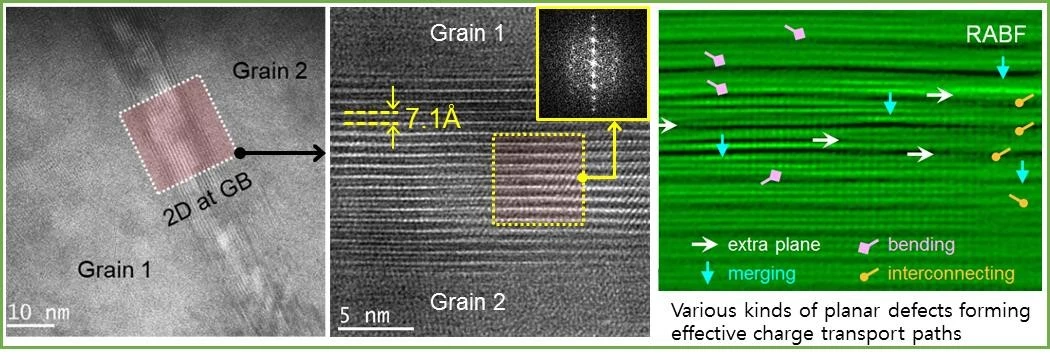The Sun is a great source of energy, but of course those rays can be damaging as well. Engineers in Korea have now developed a new way to make perovskite solar cells to protect them from the elements without reducing their efficiency.
Perovskite materials are effective at absorbing energy from sunlight, thanks to their crystal structure. They can be modified to absorb more wavelengths of light, making them more efficient. Unfortunately this is also their undoing, making the material more vulnerable to long exposure to heat, moisture, oxygen and light. And that’s a real problem, considering these are made to sit in the Sun all day.
So a team of researchers, from Korea Advanced Institute of Science and Technology (KAIST), Seoul National University and Sejong University set out to modify the material to improve its hardiness.
To do so, the team carefully mixed in molecules made of phenethylammonium and arranged in two-dimensional layers, inside the perovskite. This boosted both the efficiency and durability of solar cells, including ones made with just perovskite and others where perovskite was laid on top of a silicon layer.

The researchers report that their all-perovskite solar cell reached a peak conversion efficiency of 20.7 percent, and retained 80 percent of that after 1,000 hours of continuous light. When paired with silicon, the efficiency rose to 26.7 percent – not far off the current record of 27.7 percent – and had a similar durability.
“We developed a high-quality wide bandgap perovskite material and, in combination with silicon solar cells, achieved world-class perovskite-silicon tandem cells,” says Byungha Shin, lead researcher on the study. “Our ultimate goal is to develop ultra-high-efficiency tandem solar cells that contribute to the increase of shared solar energy among all energy sources.”
The team says that it plans on pushing the limits of that efficiency, hoping to break past the 30-percent point that’s eluded engineers for years – but remains theoretically possible.
The research was published in the journal Science.
Source: KAIST





